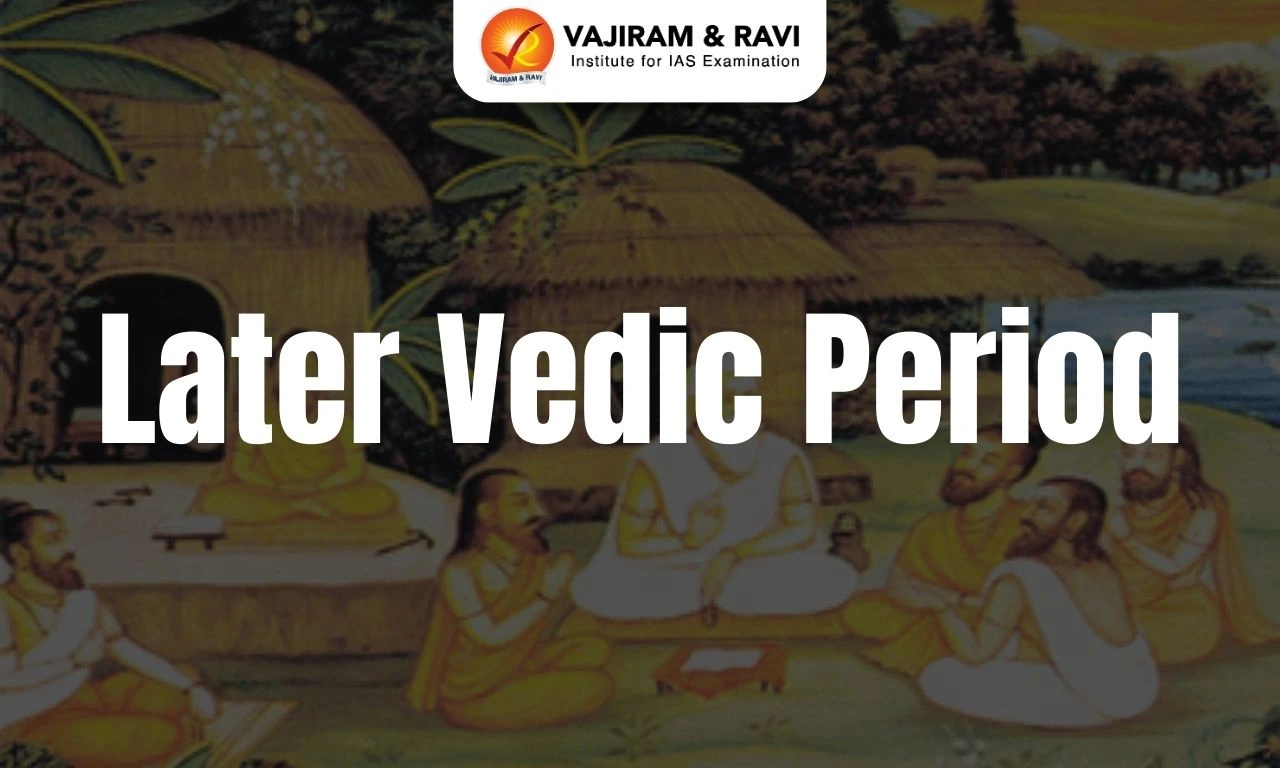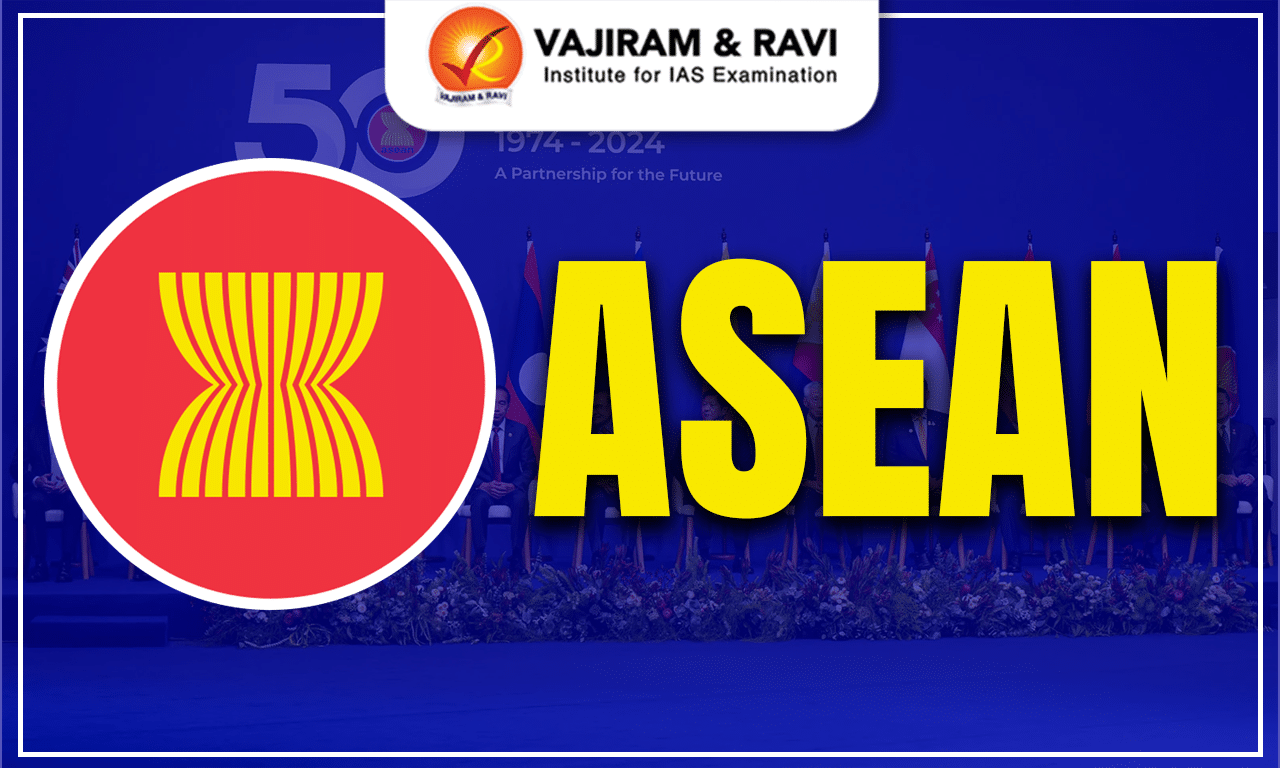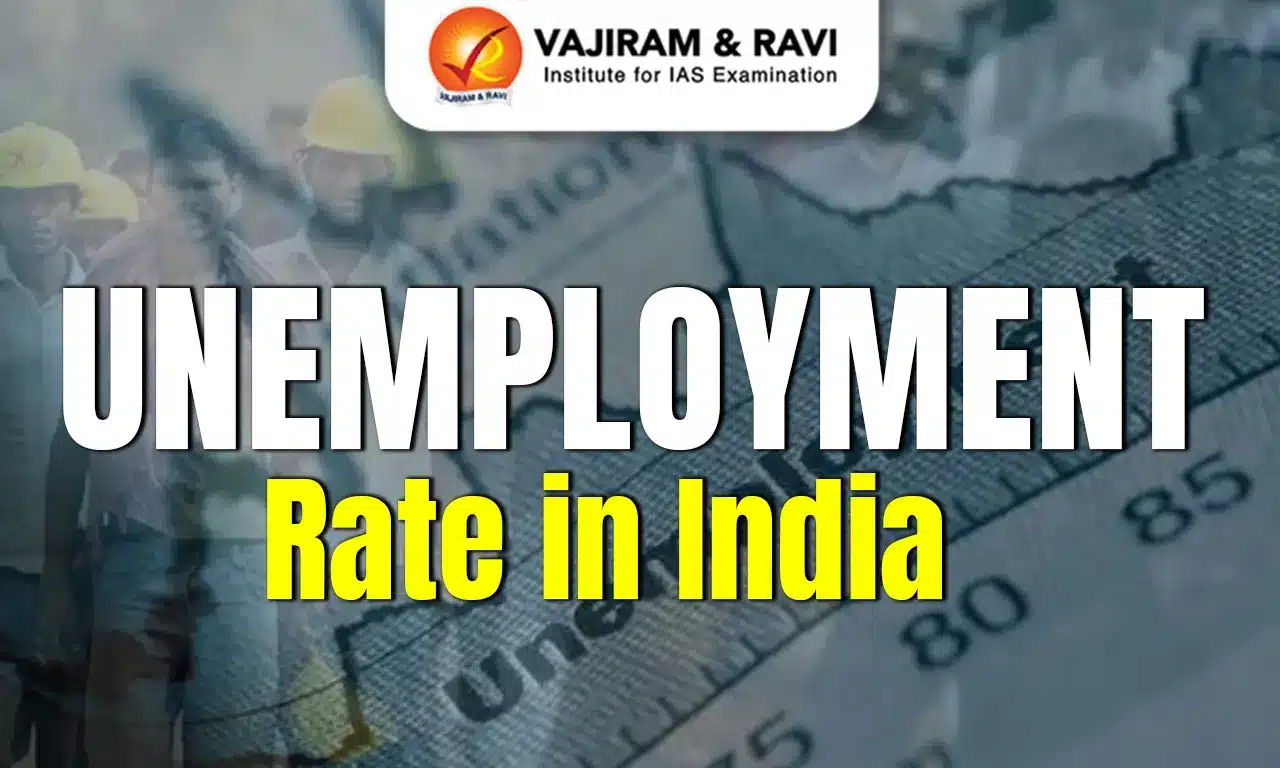The later Vedic period is placed between 1000 BC and 600 BC. The 10th mandala of the Rigvedic Samhita and the Samaveda, the Yajurveda, and the Atharvaveda Samhitas belong to the Later Vedic period. During the later Vedic phase, agriculture became the mainstay of the Vedic people. The geographic focus of the later Vedic corpus moves from the Sapta Sindhu region into the Ganga–Yamuna Doab and the territories on its fringe.
Compilation of three Vedas during the Later Vedic Period
During this period, three Vedas were composed, i.e., the Samaveda, the Yajurveda, and the Atharvaveda, which serve as literary works of the later Vedic period.
- Samaveda: The Samaveda is the shortest of all the four Vedas and is closely connected with the Rigveda.
- Sama Veda is the Veda of melodies and chants. It is compiled exclusively for ritual application, specially intended for the Udagatr priest.
- Some of the important Sama-Brahmanas are Daivatam, Vamshabrahmanam, Tandyam, etc.
- The available Aranyaka of Samaveda is the Talavakara-Aranyaka. The Chandogyopanisad also belongs to Samaveda.
- Yajurveda: It is in prose form and serves as a prayer book for the Adhvaryu priest. It is solely meant for the purposes of sacrificial rituals.
- There are two divisions of Yajur, namely Krishna Yajurveda and Shukla Yajurveda.
- Atharvaveda: The Atharvaveda is a collection of magic spells and charms to ward off evil spirits and diseases.
- The Atharvaveda is thought to be the origin of Ayurveda, the Indian science of medicine. Atharvaveda is also known as ‘Brahmaveda,’ or the Veda of the Brahma priest.
- Atharvaveda is the only Veda that is related to both worldly happiness and spiritual knowledge.
Later Vedic Period Features
During the later Vedic period, Aryans gradually moved eastward; they came to occupy eastern U.P. (Kosala) and north Bihar (Videha). The later Vedic texts, i.e., Samaveda, Yajurveda, and Atharvaveda, along with archaeological material, are used to reconstruct the society, economy, and polity of the later Vedic period.
Later Vedic Period Polity
The concept of Janapada emerged in the later Vedic period. Janapada refers to the tribe’s settlement area. In the Later Vedic texts, the word Rashtra was also used for the first time.
- Tribal Chiefs and Warriors: The Rajan or chief, now emerged as the protector of the territory where his tribesmen settled. The rajanya now became the ‘Kshatriya’, i.e., those who held power over dominions.
- Taxes:Bali, Bhaga, and Shulka gradually assumed the form of regular tributes and taxes.
- Bali: levy probably on agricultural produce
- Shulka: tolls and customs
- Bhaga: share of the produce.
- Tribal Assemblies: The sabha became more important than the samiti during this period. The office of the raja or the chief was not based solely on birth, but the choice of rajas was restricted to the Kshatriyas.
- Raja’s Legitimacy: The chiefship had become hereditary. The chief authority was established through elaborate coronation rituals such as vajapeya and rajasuya.
- Position of Brahmins: With the rising importance of Rajanya, the Brahmanas too became important. The status of the officiating priests became at par with the gods in the later period and the officiating brahmana had to be satisfied with dana.
Later Vedic Period Society
The patriarchal family was well established, and the grihapati acquired a special status.
- Gotra System: During this time, the institution of Gotra arose. This means that people with the same gotra descended from the same ancestor, and no marriages between members of the same gotra were permitted.
- Marriages: Monogamous marriages were preferred, even though polygamy was frequent.
- Four Varnas: The four varnas in which society came to be divided were the Brahmanas, Kshatriyas, Vaishyas, and Shudras.
- Brahmanas: They conducted various rituals, including those related to different stages of agricultural operations.
- The Kshatriyas were the rulers.
- The Vaishyas were involved in agriculture, trade, and artisanal activities.
- The Shudras were at the bottom of the social hierarchy. They were ordained to be in the service of the three upper varnas and were not entitled to the ritual of upanayana samskara (investiture with sacred thread necessary to acquire education).
- The other three varnas were also entitled to such a ceremony, and thus they were referred to as dvijas.
- Ashrama or different stages of life:
- Brahmacharya (student life),
- Grihastha (householder)
- Vanaprastha (hermitage) stages are mentioned in the texts.
- Later on, Sannyasa, the fourth stage, was added. It became known as varna-ashrama dharma when combined with varna.
- Status of Women: They were regarded as inferior to men and were not involved in major decision-making.
- Their participation in public meetings was restricted.
- Child marriages were becoming more common.
Later Vedic Period Religion
Changes in material lives inevitably resulted in a shift in people’s attitudes toward gods and goddesses.
- As a result, Vishnu and Rudra, who were minor deities in the Rigveda, rose to prominence. Pushan, who had previously protected cattle, became the Shudras’ god.
- There was an increase in the frequency and number of the yajna, which generally ended with the sacrifice of a large number of animals. These yajnas brought the Brahmans a large amount of wealth in the form of danaand Dakshina.
- Important yajnas were – ashvamedha, vajapeya, Rajasuya, etc.
- Towards the end of this period, a strong reaction against priestly dominance over the complexities involved in the yajnas resulted in the formulation of a philosophical doctrine that is enunciated in the Upanishads.
Economy of Later Vedic Period
The evidence from the Later Vedic period indicates a shift from a pastoral to a sedentary agrarian society.
- Iron Technology: Socketed axes made of iron, iron-tipped ploughshares, and hoes increased the efficiency of agriculture.
- Agriculture: Rice was the people’s staple diet. The Vedic texts mention Vrihi, Tandula, and Sali, all of which denote rice.
- It appears that double cropping was now practiced, and the fields grew both barley and rice. Apart from barley, people now grow wheat, rice, pulses, lentils, millet, sugarcane, and other crops.
- The importance of pastoralism declined in this period, and mixed farming, which included cultivation and herding, was the occupational norm of this period.
- Domestication of animals: The buffalo had been domesticated for agricultural purposes.
- The God Indra acquired a new epithet, ‘Lord of the Plough’ in this period.
- The elaborate sacrifices of this period, e.g., the Rajasuya, include offerings of grain along with milk, ghee, and animals. The twelve sacrifices prescribed in the Atharvaveda recommend the gifts of cows, calves, oxen, gold, cooked rice, thatched houses, and well-cultivated fields to the Brahmanas.
Last updated on May, 2025
→ UPSC Notification 2025 was released on 22nd January 2025.
→ UPSC Calendar 2026 is released on 15th May, 2025.
→ The UPSC Vacancy 2025 were released 1129, out of which 979 were for UPSC CSE and remaining 150 are for UPSC IFoS.
→ UPSC Admit Card 2025 is released now for CSE Prelims Exam 2025.
→ The UPSC Prelims 2025 is scheduled to be conducted on 25th May 2025 and UPSC Mains 2025 will be conducted on 22nd August 2025.
→ Apply once through it and aspirants can apply for various government exams conducted by UPSC.
→ The UPSC Selection Process is of 3 stages-Prelims, Mains and Interview.
→ UPSC Result 2024 is released with latest UPSC Marksheet 2024. Check Now!
→ UPSC Toppers List 2024 is released now. Shakti Dubey is UPSC AIR 1 2024 Topper.
→ Also check Best IAS Coaching in Delhi
Later Vedic Period FAQs
Q1. What is the time period of the later Vedic period?+
Q2. What are the two epics of the later Vedic period?+
Q3. What are the features of later Vedic society?+
Q4. Who were the gods of the later Vedic period?+
Tags: later vedic period quest

















